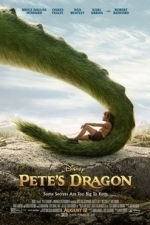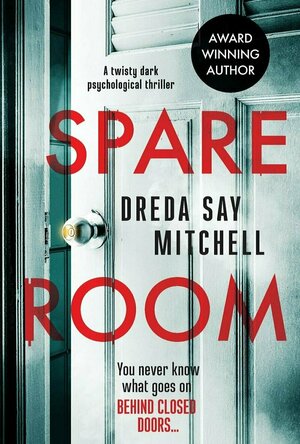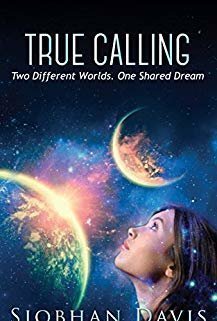Gareth von Kallenbach (980 KP) rated Pete's Dragon (2016) in Movies
Aug 6, 2019
39 years after the original, David Lowery brings us the re-invention of Pete’s Dragon. His aim was not to remake the original film, but to reinvent it. And that he did. PD opens up with a family traveling through a forest on a road trip. The young boy, Pete (Levi Alexander) is reading from a book about a lost puppy name Elliot. A tragic accident occurs, which leaves Pete by himself in the forest. As he starts to wander, a pack of wolves begins to close in on him, only to be thwarted by… you guessed it. A dragon.
Flash forward 6 years, and we now see an older Pete (Oakes Fegley) running around through the forest with Elliot, the dragon who he bonded with over the years. Pete happens upon a forest ranger, Grace (Bryce Dallas Howard) as she is scouting the forest, unmarking trees that were marked for cut down. She’s not a rebel, just protecting the habitat of an owl. Turns out her fiancé, Jack (Wes Bentley), and his brother, Gavin (Karl Urban), run the company that is tearing down the forest. One day, they happen upon Pete and bring him home, but Pete misses Elliot, and Elliot misses Pete. In an effort to get back to him, Elliot is discovered by Gavin who wants to hunt down Pete and bring him in. Grace seeks assistance from her father, Meachum (Robert Redford), who was always thought of as a crazy old man with his wild story of a dragon he met so many years ago. Can they help save Elliot from Gavin and his men?
While a little darker than the original, I found that I enjoyed this movie quite a lot. There are some plot holes to consider, and a little unbelievable on how fast the story develops in time passed in the universe set up here, but you have to understand that this movie is geared toward children. And I think they did well in creating an entertaining film for children and nostalgic adults alike. In fact, this screening was the quietest family screening I have ever attended. There were plenty of kids in the audience, but they were captivated.
Keeping in mind that this is truly a children’s movie, my biggest gripe was the absence of my favorite scene from the original (scorched apples, anyone?). But all in all, it is definitely something to get out to theaters to see. Lowery had indicated that he chose the appearance for Elliot as he did because he wanted to portray a dragon you could hug. Success, Mr. Lowery. Success. Pete’s Dragon is good fun for the whole family, so what are you waiting for? Go see it, already.
Heather Cranmer (2721 KP) rated Spare Room in Books
Feb 19, 2020 (Updated Feb 19, 2020)
Lisa is a young women with some psychological problems. However, she is determined to make it on her own without relying on her parents. When she spots an ad in the newspaper for a spare room in London for a great price, she inquires about the room and ends up living there. After finding a suicide note in her room, Lisa decides to find out more about this man while trying to figure out her own murky past. However, all this will place Lisa in grave danger.
The plot for Spare Room was highly interesting and written very well. Mitchell did a fantastic job at making it easy to transport readers into the setting. I felt like I was with Lisa every step of the way. The pacing, for the most part, is decent, and I found myself having to know more. There were a few spots were the pacing slowed, but for the most part, this book had a lot of action. I had to know more about Lisa's past. There were times I was questioning whether Lisa was sane horrific things happen to her or if she was just losing her mind. There were quite a few plot twists. Some were predictable, but others, I never saw coming. All of my questions were answered by the end of the book, and there were no cliff hangers which I was happy about.
The characters in Spare Room all felt realistic and like they were real people instead of characters in a novel. Mitchell did such a great job of breathing life into each individual character. Lisa was such a complex woman. I admired her tenacity to find out the truth at all costs even when she had everything going against her. Her determination was fierce, and she never let anyone get in her way. Alex was a sweetheart, and I loved how caring he was towards Lisa and how much he helped her out. Lisa's parents cared for Lisa, it was obvious, but I found myself wishing they would go about helping Lisa in better ways. Martha and Jack were fantastic! I always found myself not trusting Martha even though she came across as completely innocent to begin with, and I was always wondering if Jack really was as bad as Lisa thought he was. Patsy was probably my favorite character. That old woman reminded me of my grandma a lot of the time.
The narration, done by Kristin Atherton, was pretty good for the most part. I felt like Atherton started out the beginning of the book a bit flat, but she quickly got better. Her accents and voice changes for different characters were fantastic especially for the characters of Jack and Patsy.
Trigger warnings for Spare Room include violence, animal murder, attempted murder, murder, suicide, alcohol, some sex (though not graphic), profanity, and gas-lighting.
All in all, Spare Room weaves an interesting story with a fantastic cast of characters that will suck you right into their world. I would definitely recommend Spare Room by Dreda Say Mitchell to everyone aged 16+ who loves a great solid story.

iBookshelf
Book and Utilities
App
The original top ranked book database in the app store!! iBookshelf is your personal portable...
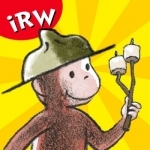
Curious George Goes Camping by i Read With
Book and Education
App
**A Children eBook Awards Silver Winner - Best Language Development and Early Childhood App** **A...

Nursing Drug Handbook
Medical and Reference
App
Find complete monographs on over 3,500 generic and brand-name drugs—including 49 new drugs...
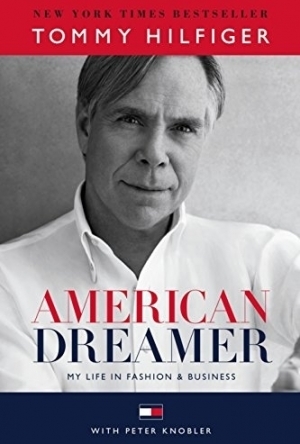
American Dreamer: My Life in Fashion & Business
Peter Knobler and Tommy Hilfiger
Book
In this tale of grit and glamour, setbacks and comebacks, business and pop culture icon Tommy...
Eleanor Luhar (47 KP) rated True Calling in Books
Jun 24, 2019
Ariana is now a citizen of Novo, where only the fittest humans were transported after the near-destruction of planet Earth. From very early on, we are introduced to Zane through Ari's dreams - but she has no idea who he is, or why she can see him in her sleep. We don't discover Zane's identity until much further through the book.
A matchmaking system is set up for all eligible young people, taking the name of "The Calling." Ari realises her feelings for the popular Cal Remus, and is luckily given the opportunity to be matched with him. The whole deal with "The Calling" reminds me very much of books such as The Selection and ?Matched.
Things seem to be going pretty well (despite the fact that Ariana is appalled at the way the government is choosing who can love who) until Ariana's father disappears and leaves behind some vital information. Suddenly, Ari isn't sure whether Cal can really be trusted, and Zane is beginning to contact her directly through her mind.
A small section of this book takes place back on Earth, told from Zane's perspective. He's working for an underground resistance movement, and is still infatuated with Ariana. He gets training to try and help him communicate with her, and Ariana's father has bestowed a dying wish upon him; to keep Ari away from Cal.
Things get pretty complicated, and the love triangle is both predictable and not at the same time. Ari doesn't remember how much she loved Zane, but can sense that there was some emotion there. Cal's father is clearly opposed to his son being associated with Ariana, and is also a despicable man in himself. There are even hints as to Cal being untrustworthy, which was something I didn't actually expect.
It's kind of a typical dystopian YA novel, but it does have some good twists. My main problem was with the lack of time-keeping; I couldn't tell whether things happened over a course of a few days or multiple months. Even if the time-frame was specified in some places, it still didn't feel like it passed in the intended way.
Another thing is that the characters spoke in a rather unnatural language. Extravagant words were unnecessarily used, coupled with overly-simple phrases. It just sounded wrong.
It took me a long time to read a relatively short book, which is always a bad sign. It wasn't painfully hard to read, but I wasn't really begging to read on either. That being said, I read a little into the first chapter of the sequel, Beyond Reach, which is included at the end of this ebook, and I am rather curious as to what's going on. Still, I don't know if I'm willing to spend any money on it.
So this wasn't a great book, but it wasn't bad. Some parts felt as though the author was trying a bit too hard to make the book seem more professional, which always irritates me. I think 2.5 stars is an appropriate rating for this.

Hurricane Pro
Weather and News
App
Hurricane Pro: The best Hurricane tracker app for the iPhone and iPod Touch! As the first...

Mircules HAM QuickLog
Productivity and Utilities
App
Mircules HAM QuickLog is HAM radio logging software for the iPad. This handy application helps you...

Text Free: Texting App + SMS
Lifestyle and Social Networking
App
Textfree gives you a real US phone number so you can text or call anyone, even if they don’t have...
